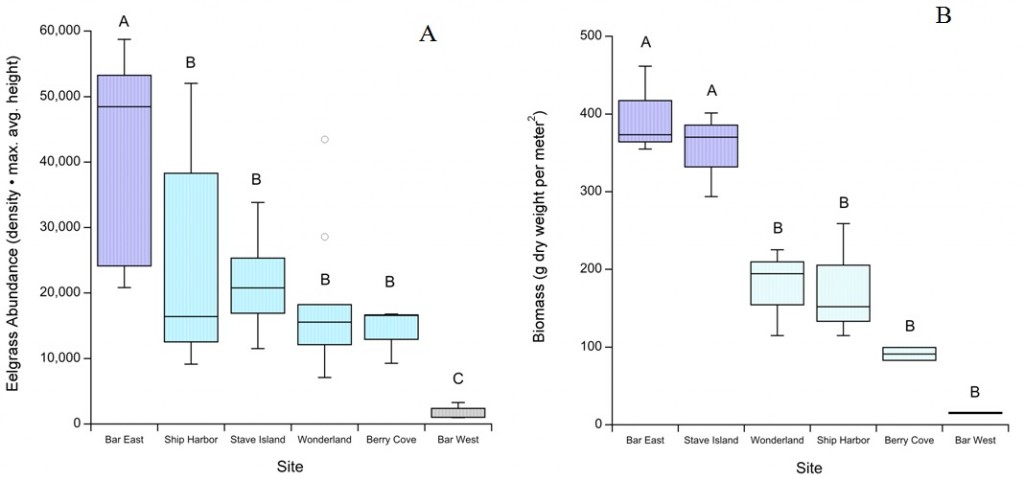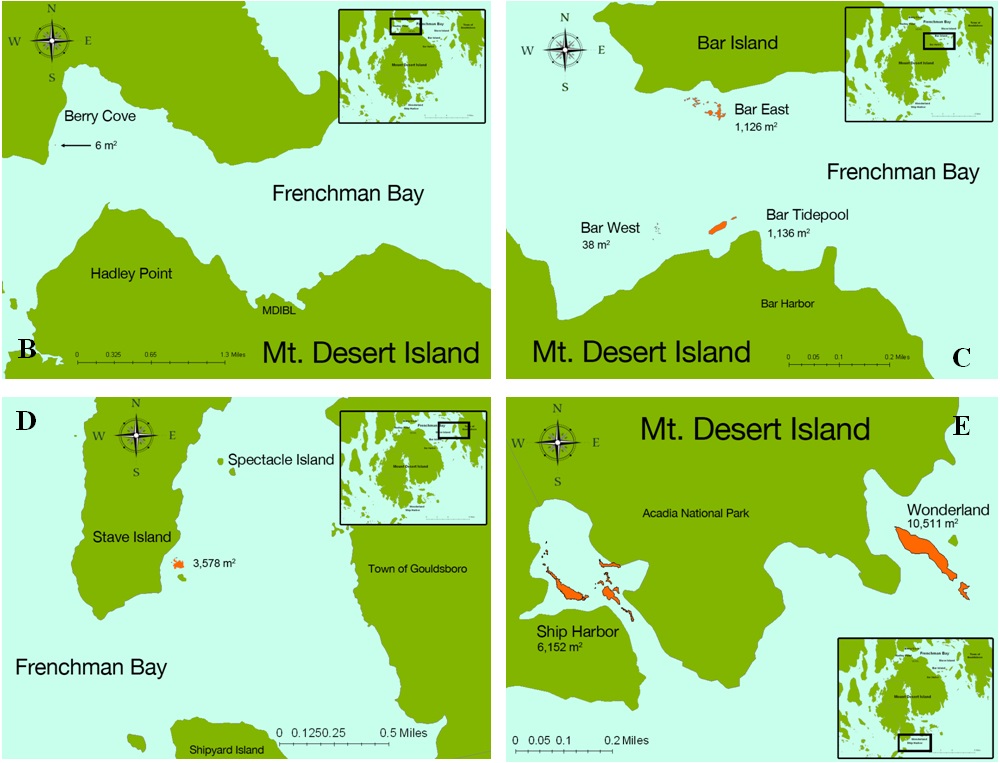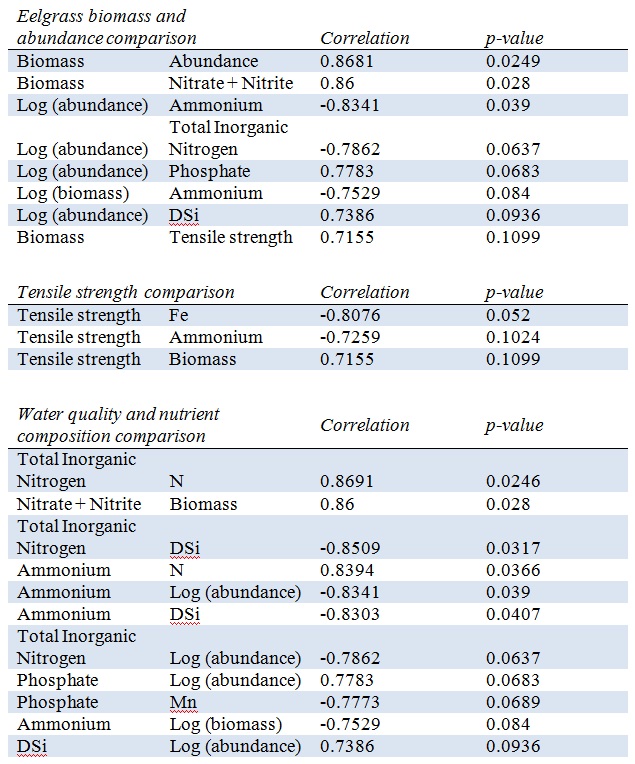Alden Dirks, Swarthmore College
Abstract: Eelgrass (Zostera marina L.) supplies myriad ecosystem services that make it an indispensable cornerstone of coastal environments. The complete disappearance of eelgrass in upper Frenchman Bay, Mt. Desert Island (MDI), Maine, in 2013 matched a precipitous drop in the concentration of dissolved silica (DSi). Eelgrass in outer Frenchman Bay and other locations around MDI appeared to be intact; however there were no DSi data to compare with upper Frenchman Bay locations. To investigate the relationship between eelgrass health and DSi, we determined eelgrass abundance and biomass at six locations around MDI. Furthermore, we measured dissolved nutrient concentrations in the water column as well as tensile strength and nutrient composition of tissue samples. We found a positive relationship between eelgrass abundance and biomass, and a positive relationship between biomass and the concentration of nitrite and nitrate. In addition, tensile strength was significantly different across the six sample sites. However, neither abundance nor tensile strength was significantly correlated with nutrient composition of the plants or water quality. These results reveal a deeper complexity to the issue of eelgrass abundance and tensile strength that requires further nuanced investigation into other factors such as local geography, oceanographic currents, and sediment type as they relate to eelgrass viability.

Eelgrass abundance (A) and biomass (B) differed significantly across sample sites. The boxplots show the median, the first and third quartiles, and the lower and upper extremes. Different letters indicate significant differences between means. Four data points from Bar East were excluded in the eelgrass abundance analysis; an outlier taken from the edge of a patch and the last three data points were removed to equalize sample sizes.

Maps of the study sites around Mt. Desert Island. A: the entire island with the position of the six study sites relative to one another.

B: Berry Cove in upper Frenchman Bay, including Hadley Point, a restoration area that used to contain abundant eelgrass populations. C: Bar East and Bar West, located by Bar Harbor. D: the Stave Island study site, located between Stave Island and Gouldsboro. E: Ship Harbor and Wonderland to the south of Mt. Desert Island.

The relationships between variables, including eelgrass abundance, biomass, nutrient composition, water quality, and tensile strength were tested. Significant (P ≤ 0.05) and weakly-significant (P ≤ 0.11) relationships are listed below by ascending p-value.

